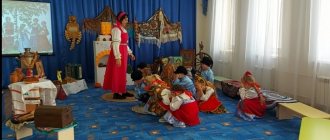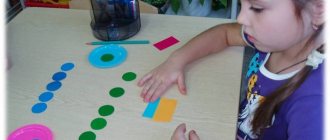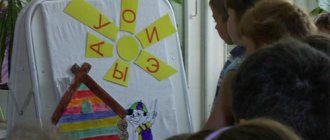Conducting an open integrated and comprehensive lesson in a preschool educational institution
Any open lesson is conducted according to general rules that are important to follow. Preparing an open lesson is painstaking work and a huge psycho-emotional load. After all, a person not only finds himself under meticulous and close attention, but also becomes the personification of the institution in which he works. Parents often correlate the institution with the personality of the teacher (which, of course, is wrong, but this is not felt at the time of the lesson). Each parent goes to an open lesson with their own expectations, and the teacher tries not to disappoint them. This is where the teacher must stop. The lesson is held for children, and parents are spectators. You shouldn’t try to please everyone and show everything at once.
A diagram of the basic rules for preparing an open lesson allows you not to lose sight of anything important
The teacher must understand that there are no trifles in this case. The simple absence of an extension cord will make it impossible to use some didactic or other material. It is also important to understand the fact that technical failures may occur. Therefore, it is necessary not only to check the equipment in advance, but also to think through the moments of possible failures in advance. If a child is sick and he has most of the required poem, then the lesson is also in danger of being disrupted.
When preparing an open lesson, think through possible unplanned moments. This will allow the teacher to get out of any situation with dignity.
Currently, Internet technologies are developing and opportunities are emerging for online broadcasting of open classes. In this case, the main thing is to position the camera correctly and conduct the lesson so that the children are in the frame the entire time.
When broadcasting online or demonstrating in a recording of an open lesson, there are a number of obvious advantages:
- Eliminates the preparation of materials for parents and their notification and instruction, which allows you to devote more time to working on the lesson itself.
- Allows educators to avoid difficult situations with parents. Especially in those moments when parents try to help their child cope with a task, mistakenly assuming that he cannot do it.
- Children are not distracted by the presence of strangers.
- Subsequently, the video recording allows you to competently and comprehensively analyze the lesson.
- The lesson takes place in a familiar environment for children.
- The parent has the opportunity not only to observe his child at the moment, but also to save the recording in the archive for a long memory.
Final open lesson
A distinctive feature of the final classes is that they should clearly demonstrate to both children and adults what they managed to learn during the reporting period. In kindergarten, such classes are most often held at the end of each semester. It would be a big mistake to try to create a lesson out of everything that you managed to teach your students. It is best to take as a basis a topic (in this case it will be more convenient to use a complex form) or a section (an integrated lesson is suitable here) and collect those forms that are most effective for the entire group. We must not forget that personal achievements and group achievements are different concepts. In an open lesson, the teacher shows the work of the group as a whole, and not of individual children.
Logical and correctly selected material is the basis of a good open final lesson
Another mistake would be starting incorrectly. If you have chosen a topic, then you should not try to make an integrated lesson out of it, it is better to make a high-quality comprehensive one. If the concept and its consideration from the points of view of different topics were taken as a basis, then special attention should be paid to a logical and consistent presentation.
Structure and timing of the lesson
When preparing any lesson, SanPiN rules apply, which clearly regulate the duration of the event. Considering that open, integrated and complex classes are recommended for children aged 3–4 years and older, the duration of such a lesson can vary from 15 minutes in the second youngest group to 30 minutes in the preparatory group.
You can learn more about integrated and comprehensive classes in the senior group from our article - Integrated and comprehensive classes in the senior group of preschool educational institutions.
The rules and regulations of SanPiN take into account all the psychophysiological characteristics of children of different ages, so it is undesirable to violate them
The structure of any lesson in a preschool educational institution consists of 3 successive stages:
- Introductory part - 2–5 minutes. The teacher shows the children something bright, interesting, and exciting.
- The main part is 12–25 minutes. Includes several activities and a music or physical education break.
- The final part is 2–5 minutes. Summing up and reflection.
In order to conduct an integrated lesson, several different classes can be combined (for example, educational, musical, physical education, etc.). In this case, one type of activity should not exceed the interval recommended by regulatory documents and there must be an alternation of dynamic and static moments.




